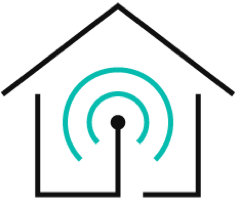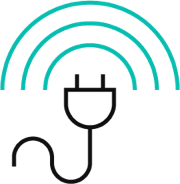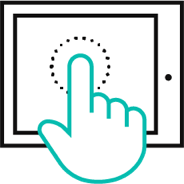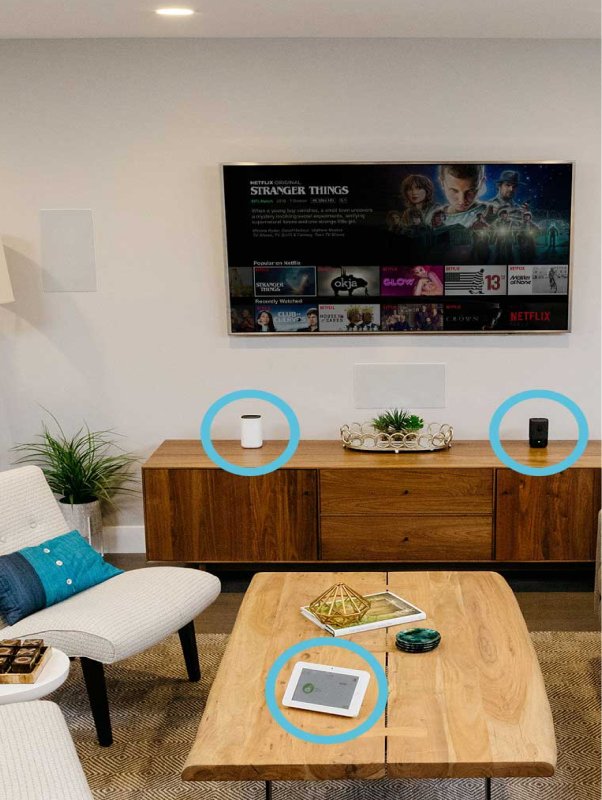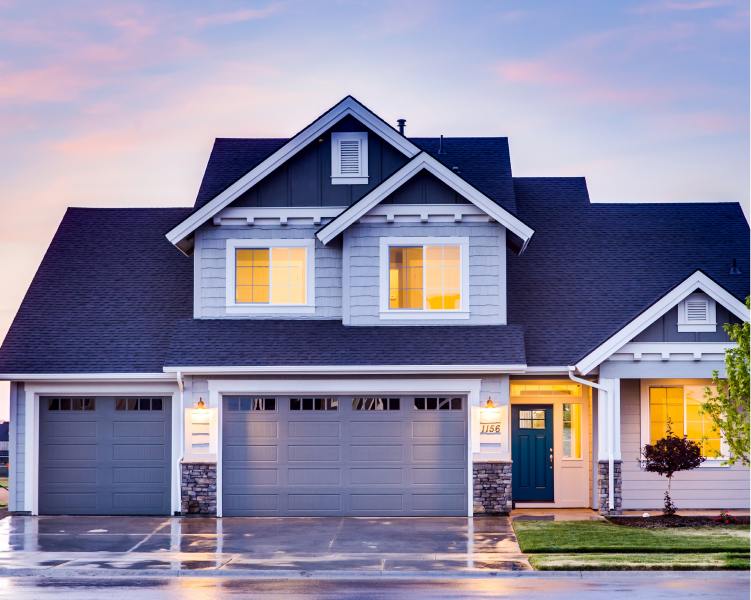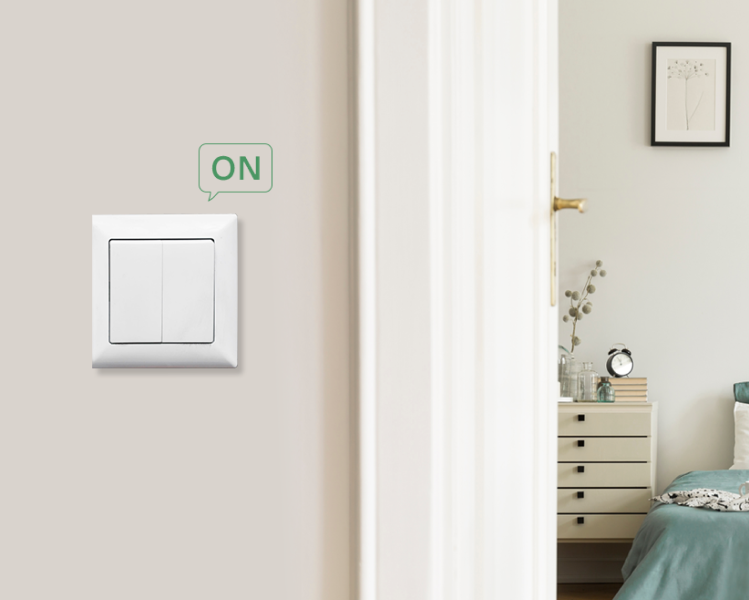Don't let anyone convince you otherwise: a smart home hub is required for a smart home.
It would be best to have a home automation hub to get all your smart home appliances from various manufacturers operating together and controllable from one app.
Although the death of the smart home hub has been heavily discussed, the reality is less specific. In actuality, corners come in a variety of shapes and sizes. You might already have a smart home hub, and in a surprising twist towards the end of the season, you might not even need to buy anything.
Home hubs are sometimes pictured as white devices attached to your router, but some brilliant speakers, like the Google Nest and Echo, can fill in the shoes of their bigger brothers.
Everything relies on the technology you wish to connect with and your chosen method. You'll need to understand the differences between protocols like Zigbee, Z-Wave, HomeKit, SmartThings, Matter, Thread, Alexa, Google Assistant, and others.
And it can get perplexing. But don't worry; this manual can assist you in that situation.
Evvr is a leading brand regarding smart home control systems and peripheral devices. The idea behind developing and supporting exceptional hardware and software is simple - making people's lives better. Learn more about our partnership program !
- Functions of A Smart Home Control Systems
- Types of smart home Controllers
- Smart home Communication Protocols
- Top Smart Home Control Systems
Functions of A Smart Home Control Systems
Your road toward a Smart Home should begin with the Controller, the system's brain. A Smart Home "Controller," also known as the hub, gateway, or bridge, does precisely what its name implies: it "controls" your Smart Home. It allows you to construct and execute "logic" as flows, scenarios, or moods and add and configure devices. These will enable the system to perform tasks automatically, such as turning on lights in response to motion or turning up the heat right before your family gets home so that your home is toasty when they open the front door.
Using WiFi or an Ethernet cable, the Controller is linked to your modem or router for internet access. This enables remote access while you're away from home and allows you to control the system from a smartphone, tablet, or computer. Installing an "App" for that Controller will enable you to control the system from your smartphone or tablet, giving you access whether you're in the living room or relaxing on a beach halfway around the world.
Choosing one can be challenging because each Smart Home Controller performs the same functions differently. Because it depends on the needs and requirements of each user, it might be a very subjective choice.
After that, your initial challenge is deciding which manufacturer to purchase, so we'll help you comprehend the distinctions between some of the more well-known and well-liked businesses.
Types of smart home Controllers
You can control many elements of your smart home with full or hybrid controllers because they have the most functionality. They frequently support many technologies (such as Z-Wave or Zigbee) and can be expanded to manage security, heating, and other functions. A complete or hybrid Controller is preferable if you want to control various areas of your house (now or in the future).
A system that concentrates on one or more core technologies (like Z-Wave and Zigbee) while still having the flexibility to be interconnected with other systems and devices from multiple technologies is the route that most consumers will take.
The best course of action for the majority of Smart Homes is to select a Smart Home Controller that complies with the following standards, but don't forget to also look into integration options with any proprietary products or systems you may also intend to use (like Hive, Tado, or Visonic), for instance using IFTTT or a Cloud Service.
Smart home Communication Protocols
- Z-Wave
With Z-Wave, you can add new cabling without tearing up carpets and floors because it employs dependable, low-power radio waves that readily pass through walls, floors, and furniture.
No more questioning whether the light in your garage went off when you closed the door, thanks to features like two-way communication, status updates, and mesh networking that work together to assure stability and robustness in your Smart Home system.
- Zigbee
An open standard called Zigbee was created to support the widespread creation of devices for wireless control and monitoring applications. Zigbee is a low-cost, low-power wireless mesh network. The most significant players in the business, including Evvr, Philips, Nest, Aeotec, Texas, Siemens, and Whirlpool, support this communication protocol.
You get a robust, durable, and self-managing system with Zigbee-based devices. Zigbee devices are frequently significantly simpler than their Z-Wave equivalents since they concentrate on specific functions like motion detection or light dimming rather than attempting to incorporate various features into a single device.
- Local Network
With the widespread use of WiFi and Ethernet (wired) networks during the past ten years, you may now "get connected" practically anywhere, including at home, at work, in libraries, classrooms, airports, restaurants, hotels, and even while traveling in some forms of public transportation.
Since WiFi and Ethernet are so common, smart home gadgets can benefit significantly from their ability to use your current home network. As a result, many products now have WiFi and Ethernet connectivity. It makes sense to use this Network rather than having to construct something new because it's likely that you already have adequate Network coverage throughout your home utilizing a combination of WiFi and Ethernet.
- Cloud Connection
We connect with the Internet every few minutes, possibly without even realizing it because it has integrated seamlessly into our daily lives.
Many Smart Home devices now use Internet connectivity, evident when using services like Facebook, Twitter, and WhatsApp. As a result, the next time you check your doorbell camera or change the heating temperature on your Smart Thermostat, you'll probably be interacting with a "Cloud Service" halfway around the world.
Top Smart Home Control Systems
- Alexa Smart Home Hub
Since the internet giant began including Zigbee connection in its smart speakers, Amazon's Alexa ecosystem is finally a viable smart home platform on which to base your entire setup.
The Works with Alexa platform is the perfect choice for those who wish to take control of their numerous gadgets because of its enormous reach and variety of support.

There are very few smart home gadgets that don't have Alexa skills, so you can quickly transfer control of your devices to Amazon's voice assistant. Groups and scenes also function well; you can use the app and your voice to operate various appliances.
To make all your devices work together, Alexa also enables you to establish Routines that run based on the time of day, voice commands, device-based Routines, geolocation-based Routines, and Echo Button-based Routines.
- Google Nest Hub
As a true assistant-based smart home hub, Google is quickly catching up to Amazon's Alexa. However, it still lacks a few critical features, most notably the ability to trigger intelligent home Routines automatically.
However, you can make all of your gadgets respond using voice commands, touch, and time; many are Google-compatible.
If you own older Nest items like the Nest Thermostat, Nest Protect smoke alarm, Nest Hello Doorbell, Nest Secure alarm system, or any of the more recent Google Nest-branded goods, Google is also your best option.

- HomeKit Hub
Apple's HomeKit is a hybrid between software and a traditional hub. You can use your iPhone to operate any HomeKit-compatible gadgets, but you also need a little box-like device if you want to control them while you're away from home.
But it would help if you had that box to get the whole HomeKit experience, and the Apple TV is the perfect hub for the job because you can use the Remote to call Siri and because it also serves as a top-notch set-top streaming device. For a more dependable connection, there is also an Ethernet port (which is not available on the HomePod or iPad).

- Aqara Hub M2
With its low-cost, high-quality products available to fill every nook and corner of your smart home, Aqara is emerging as a critical player in the industry. Aqara's products are compatible with Apple HomeKit, Amazon Alexa, and Google Home and include everything from motion sensors to smart switches.
The Aqara system is a good and expanding ecosystem of goods centered on a Zigbee smart home hub, of which there are three. The M2 is a fantastic option at a tremendous cost.

The M2 is a Zigbee-based system that can connect Aqara's battery-powered intelligent devices to your preferred voice-controlled innovative home system (or Aqara's own internal system and app). It is compatible with Alexa, HomeKit, and Google Assistant.
- Aeotec SmartThings Hub
Although the Korean firm used to manufacture hardware in-house for the Samsung-owned SmartThings environment, it has now outsourced the process to third parties. SmartThings is a very well-liked ecosystem.
However, people have another alternative, as Aeotec's SmartThings Hub is effectively the v3 but with different branding. The Samsung-branded v3 Hub is currently in extremely short supply; you'll need help to locate one for sale anywhere.
The most recent SmartThings base is a flexible hub that supports a wide range of devices thanks to interoperability with Zigbee and Z-Wave and an open methodology.

- Control4
Only accredited dealers can install and configure the Control4 systems, which are tailored connected systems for homes, hotels, offices, and more.
It is a high-end product that is significantly more expensive than outfitting your home with the DIY intelligent home hubs we've reviewed. However, Control4 also assures its customers that they are getting a top-notch system with a support network for any problems or modifications.
Lighting, multi-room audio, HVAC systems, security systems, smart locks, and other devices can all be controlled by a Control4 system. It utilizes technologies like Zigbee, Z-Wave, WiFi, and Bluetooth and works with over 35,000 products from various manufacturers.
Evvr Center Lite - One Hub, Unlimited Possibilities
Among a constellation of smart home controllers and appliances, the star of Evvr shines the brightest. It is the foremost choice of modern consumers regarding smart home controllers, smart switches, etc. Check out our Evvr Center Lite, a one-hub to rule over all. It is compatible with Zigbee, Z-Wave, and Bluetooth to cover diverse devices. Place your order now and step into the future!

